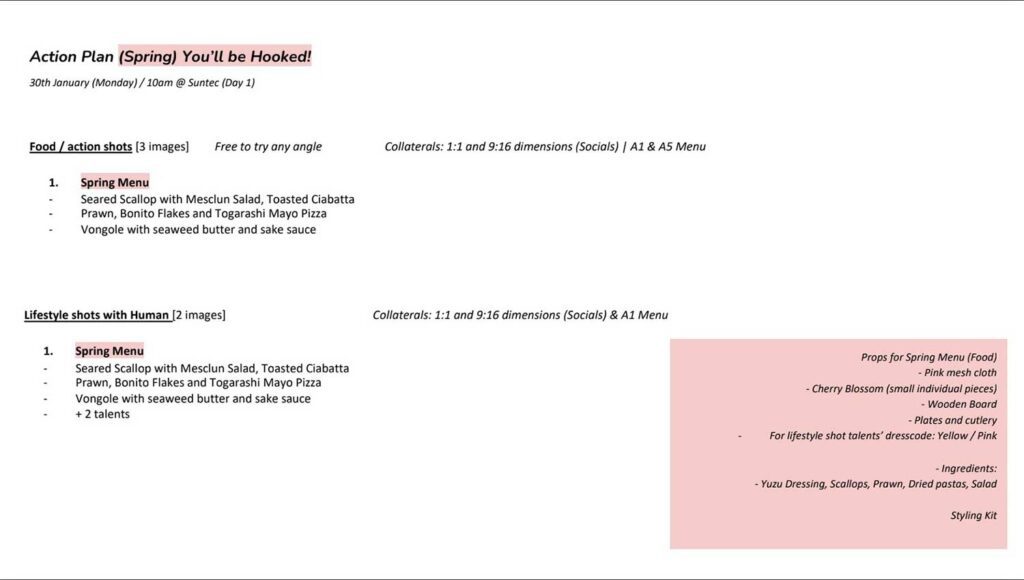Concept to Capture: The Process of a Professional Shoot
Unveiling how the planning process of a shoot happens.
A photography shoot is a creative process that involves more than just pointing a camera and pressing the shutter button. Behind every captivating image lies a well-thought-out concept and meticulous execution. In this blog post, we will delve into the behind-the-scenes process of a food photography shoot, taking you fro. m the initial concept to the final capture. Discover the key steps involved in bringing a vision to life and gain insights into the efforts and considerations that contribute to a successful photography session.
1. Concept Development
The first step in any photo shoot is concept development. It starts with a clear understanding of the project goals, target audience, and desired message. The photographer, along with the client or creative team, brainstorms ideas, explores visual references, and outlines the overall concept. This stage involves gathering inspiration, researching, and sketching initial ideas. The concept serves as a roadmap, guiding the entire shoot process. For this client, they were releasing a new menu for seafood-based foods.

Inspiration Moodboard by our client. (Photo from GradePixel)
2. Pre-Production Planning
Once the concept is finalized, the pre-production phase begins. This stage involves organizing logistics, securing the necessary resources, and creating a detailed plan. It includes tasks such as scouting locations, arranging props and wardrobes, scheduling models or subjects, and coordinating with the team. A shot list or storyboard is created to outline the specific images to be captured. During pre-production, attention is given to aspects like lighting requirements, equipment needs, and any special effects or techniques that will be employed during the shoot.

Details of the shoot by the client, what to capture and what props we should have. (Photo by GradePixel)
3. Execution on the day of the shoot
On the day of the shoot, all the planning and preparation come together. The photographer, along with the team, sets up the shooting environment, ensuring everything is in place. This includes arranging props, setting up lighting equipment, and testing camera settings. The model or subject is prepared, and any adjustments to hair, makeup, or styling are made. Throughout the shoot, the photographer directs and guides the subjects, capturing images that align with the envisioned concept. Flexibility and adaptability are crucial during this phase as unforeseen challenges may arise.

Behind the Scene of the shoot day. (Photos by GradePixel)
4. Post-Production and Image Selection
Once the shoot is complete, the selection and editing process begins. The photographer reviews and selects the best images that convey the desired message and align with the concept. Post-production techniques, such as colour correction, retouching, and cropping, may be applied to enhance the final images. The selected images are then processed and delivered to the client or used for their intended purpose.

Screenshot from Peperoni Pizzeria’s Instagram.
A successful photography shoot is the result of a well-planned and executed process. From concept development to post-production, each stage plays a vital role in bringing a vision to life. By understanding the behind-the-scenes process, clients, aspiring photographers, and enthusiasts can appreciate the efforts and considerations involved in creating captivating images. So, the next time you see a stunning photograph, remember the journey it took to go from concept to capture and let it inspire your own creative endeavours.


